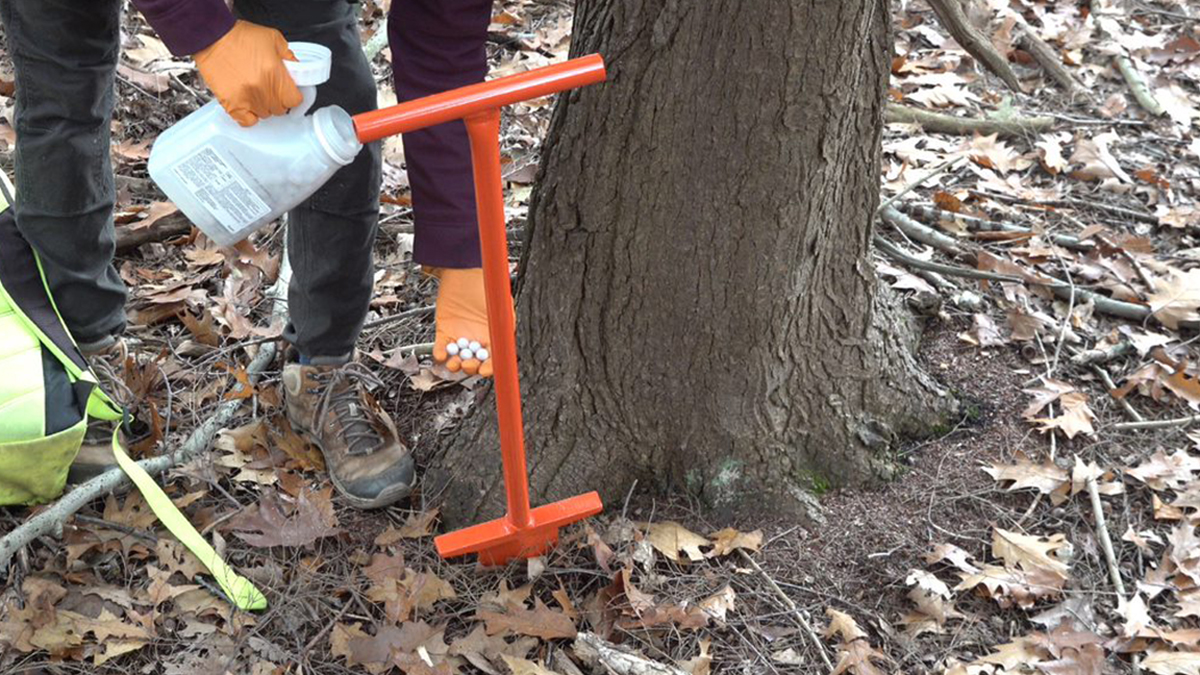They’re larger than a pea but smaller than a grape, but the bottom line is these white pills have a big beneficial impact on elk in the core of Pennsylvania’s elk range.
The Rocky Mountain Elk Foundation provided funding for the Pennsylvania Game Commission (PGC) to thwart an insect that attacks and kills eastern hemlock trees on State Game Lands 14 in Cameron County. Hemlock wooly adelgid, as it’s called, feeds on the sap of a given tree that triggers a fuzziness on the green needles, turning them yellow in color before they die and fall off.
Thanks to RMEF grant funding, a contractor used a small spade to place a handful of insecticide tables just beneath the soil of selected hemlock trees of different ages spread across a 40-acre project site in November 2021. The treatment protects the trees from HWA infestation while ensuring both young and older hemlock trees survive and thrive.
“We’re very fortunate here to have a partnership with the Rocky Mountain Elk Foundation,” said Abby Kane, PGC forester. “They were actually able to fund this hemlock treatment project through a PAC (project advisory committee) grant. We otherwise would not have been able to preserve these trees.”
PGC crews also carried out additional habitat stewardship work in the immediate area by planting a variety of new conifer seedlings, daylighting existing young conifers and border cutting around conifer stands to allow for the recruitment of new young hemlock seedlings.
Pennsylvania forests are dominated by deciduous tree species including eastern hemlock, the official state tree. Game Lands total nearly 15,000 acres and are predominantly forested with oak and northern hardwood species the primary tree species on the landscape. The Game Lands has a minor component of eastern hemlock as the predominant conifer species.
(Photo credit: Pennsylvania Game Commission)
